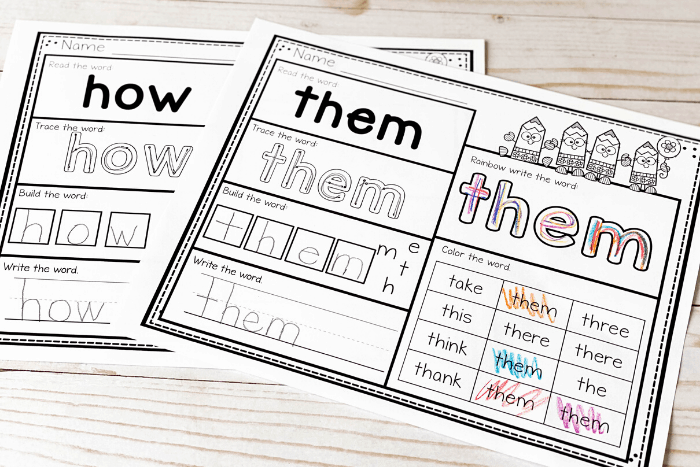

#IEP FOR SIGHT WORDS 1ST GRADE FULL#
They must be given the opportunity to participate in the traditional school experience to the full extent possible.

What’s more, they must allow students to participate in that education in the least restrictive environment (LRE) possible. IDEA says that school districts must provide a free, appropriate public education (FAPE) to all children. IEPs grow and change along with a child and are regularly reevaluated to ensure they’re still effective (at least annually, sometimes more frequently). It assesses their present performance, sets reasonable measurable goals for the child, and specifies the services the school will provide. The IEP is the cornerstone of a child’s special education program. Children who qualify must be provided with an education that meets their unique needs, provides access to the general education curriculum, and meets state grade-level standards. This federal law entitles all children with certain types of disabilities a free, appropriate education. Today, IEPs are covered under t he Individuals With Disabilities Education Act (IDEA). IEPs were first introduced in 1975, when Congress passed legislation that gave children with disabilities the right to attend public schools. It’s a legal document that clearly defines how a school plans to meet a child’s unique educational needs that result from a disability. IEP stands for Individualized Education Program. What is an IEP, and how does it affect students, teachers, and families? Here’s what you need to know. In time, it's likely you'll come up with your own strategies which make learning not only your own special adventure but introduce your own kind of fun into learning as well.Most teachers have at least one or two students with IEPs in their classrooms each year, and sometimes many more. All of these strategies work best when they can be used as part of a game and as part of the special time a child spends with his parents. Knowing the importance of recognizing sight words in reading, emphasizes why working to make these sight words a fluent part of your child's vocabulary is so important. If she does not get the definition correct, read the correct definition to her, and continue the process until all words and definitions are memorized.If she gets the definition correct, proceed to the next word.Once words are recognized, begin asking your child to define each word.Continue until each word is recognized.

If your child gets the word right, read the definition aloud, and go to the next card.A good way to do this is to make flashcards of the words with definitions on the back. The bold-typed vocabulary words in most texts are good choices.Īs your child learns each sight word, have him also learn the definition of that word. Choose sight words from new words your child will be used in various subject areas in school.Have your child fill in the missing sight word. Make a worksheet of sentences with missing sight words.Write poems together using sight words.Keep the activity fun by rewarding your child for finding and fixing his mistakes. Have him check his work, and correct any mistakes. Have him copy each sight word four times, once in each column. Have your child make five columns on a piece of paper.Once your child has a good grasp on about twenty sight words, consider making a word bingo game to play to reinforce word recognition skills.Familiar learning activities are often helpful. Children will learn more quickly if you are reinforcing the same words at home as they are working on in school. Ask your child's teacher what strategies are being used in school, and try those at home as well.Ask your child's teacher what sight words are being learned, and work on those at home as well.Having your child help make the cards can be a learning experience as well.

Puffy paint, glue, rice grains, sand, and pipe cleaners are good choices for textured cards. Create multisensory sight word cards with the words written in a textured material so that children can feel the words and read them at the same time.If the sight word is an object you have around the house, such as a chair, make a card and attach it to the object in the house.Point out sight words when you see them as you read together.Create two sets of cards with the words on them, and play matching games like Go Fish or simply mix up the cards and have the child pick out the matching cards to pair up.Five to ten words may be a good start for children with learning disabilities in reading or dyslexia. Start with a small number of sight words and focus on them for a week.


 0 kommentar(er)
0 kommentar(er)
